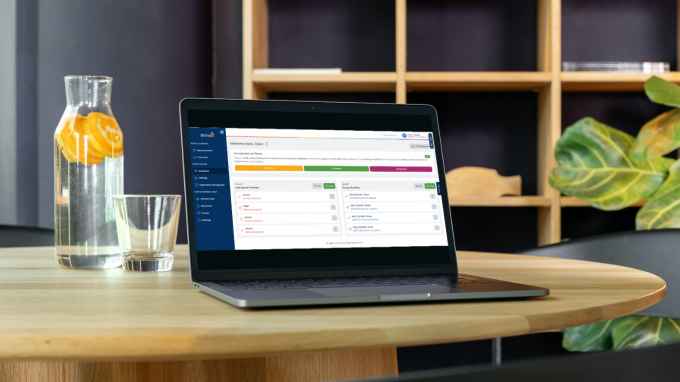With much attention drawn towards mindfulness on the Thrive social media pages, we've been taking a further look at how mindful practice is integrated within our Approach.
What is mindfulness?
Before we look at Thrive and mindfulness working together, we need to establish exactly what we mean by mindful practice.
Professor Mark Williams, former director of the Oxford Mindfulness Centre, has described mindfulness as knowing directly what is happening inside and outside of ourselves. It is noticing what is going on from moment to moment.
It's easy to stop noticing the world around us. It's also easy to lose touch with the way our bodies are feeling and to end up living 'in our heads' - caught up in our thoughts without stopping to notice how those thoughts are driving our emotions and behaviour.
An important part of mindfulness is reconnecting with our bodies and the sensations they experience. This means waking up to the sights, sounds, smells and tastes of the present moment. That might be something as simple as the feel of a banister as we walk upstairs.
Another important part of mindfulness is an awareness of our thoughts and feelings as they happen moment to moment.
It's about allowing ourselves to see the present moment clearly. When we do that, it can positively change the way we see ourselves and our lives.
Click here to read more.
Thrive and mindfulness: how does this relate to our Approach?
When a Practitioner works with a child over time using Thrive, the child is taken through the stages of Being, Doing, and Thinking (they also will work with children at other strands too - Power and Identity, Skills and Structure and Interdependence - as we use Thrive as both a 'reparative' and a 'right time' model). During this developmental journey, they are building the foundation for greater mindfulness. As such, they are becoming more aware of their bodily sensations (Being), they are attaching language to those sensations and the corresponding emotions (Doing) and are reflecting on them (Thinking and beyond). Consequently, Thrive should provide the basis for children to able to achieve greater mindfulness. They are more aware of what is happening inside of them, meaning that they can then regulate their internal states.
Mindfulness is not to be considered a separate add-on; it doesn't work alongside Thrive. Rather, it is an intrinsic part of the Thrive Approach. The Thrive Action Plans created are far more specific than general mindfulness activities, many of which are not catered to differing interruptions and needs.
Attuned Practitioners will be able to choose those mindful activities appropriate for the child. For example, a child at Being might be encouraged to run their fingers through sand and notice how it feels. They are becoming mindful of the sensations, in other words.
Although this might not resemble traditional mindfulness, it is still a form of the practice and may be the first step towards the child being able to engage with those activities.
Can Thrive work alongside recognised mindfulness practice?
Traditional approaches to practicing mindfulness include breathing exercises, body scanning and visualisation. These are widely used by children and adults to help regulate emotions, calm the body, and gain a sustained focus on the moment in hand.
If Thrive Practitioners want to guide children through these explicit mindfulness activities, they need to be extremely attuned to the needs of the children and what they are able to access. Some activities will not be appropriate for those with Being, Doing or Thinking needs. For example, if a child has experienced trauma, getting them to sit still and tune into their internal sensations may feel unbearable to them because the only way that they are coping is by numbing out or distracting themselves from the overwhelming sensations inside. Similarly, a child at Being might be so unaware of their body that asking them to focus on their breathing is meaningless to them.
How do you implement mindfulness in your setting?
Whether you use the more traditional mindfulness practices or use suggested activities provided by Thrive, we'd really like to know how it's working for you and the children or young people in your setting.
Post to our Facebook, tweet us, or share your mindfulness practices with us on Instagram - remember to tag @ThriveApproach in your photo caption.
Over to you
Reduced anxiety and behavioural incidents. Calmer classrooms filled with engaged leaners. Improved relationships with parents and carers. These are just some of the outcomes reported by settings embedding Thrive’s whole-school approach to mental health and wellbeing. Are you ready to join them? Click here to get started.
Pass it on
Small actions can lead to a big ripple effect. If you enjoyed this post or found it helpful, please consider supporting us in our mission to help every child and young person feel safe, supported and ready to learn by sharing it using the social media buttons below.
Want to join a like-minded community of senior leaders and classroom staff benefitting from insights and strategies to improve attendance, behaviour and attainment? Add your email address below. (It’s easy to unsubscribe).




(1)_680.jpg)
_680.jpg)


_680.jpg)
_680.jpg)